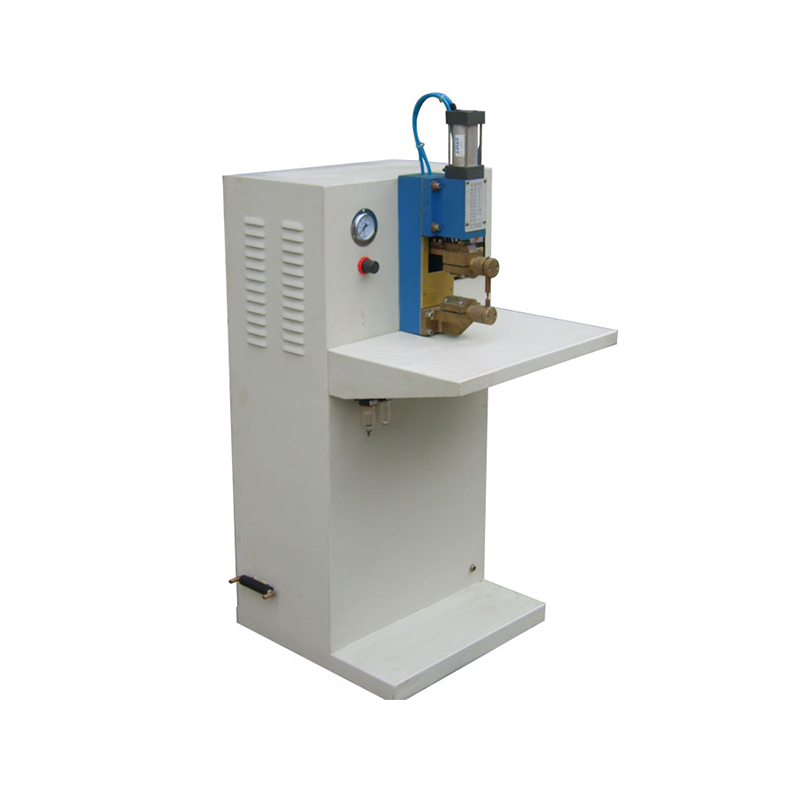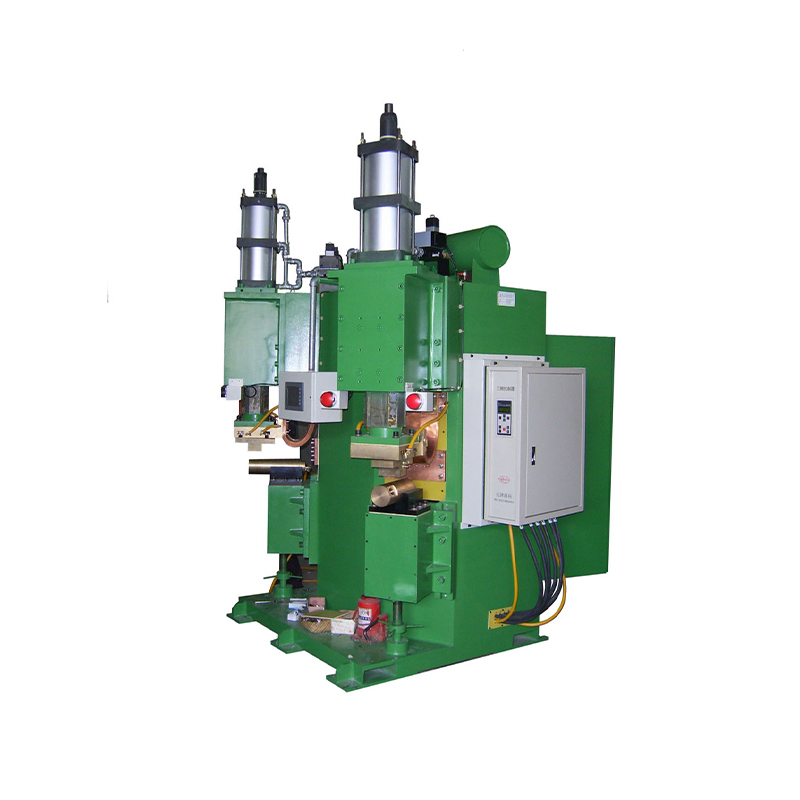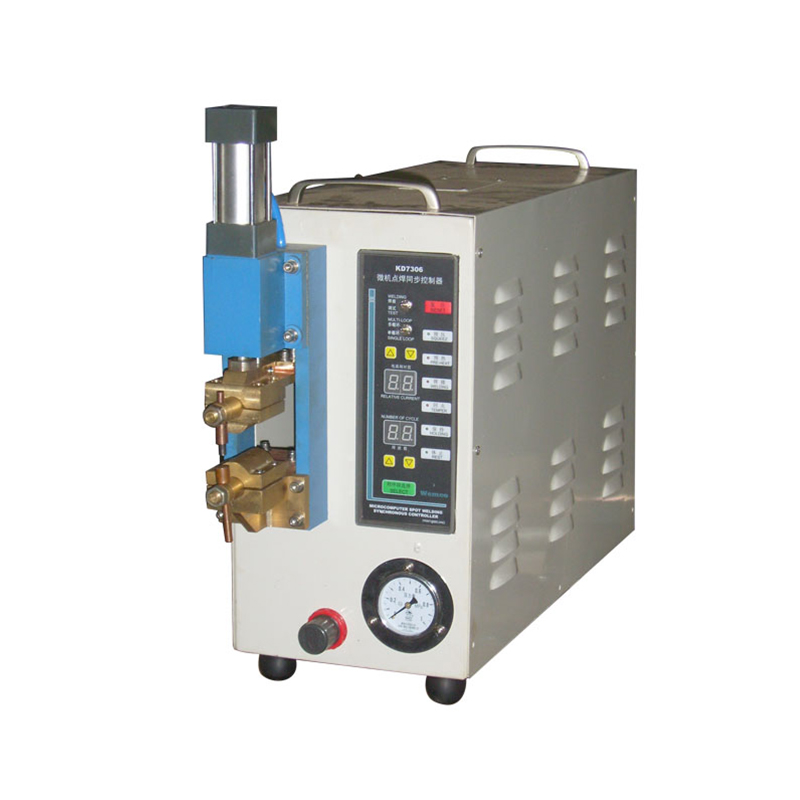How does a spot welding machine achieve adaptive welding based on the properties of different metal materials through an intelligent control system?
Release Time : 2025-07-31
As a vital tool in modern industrial manufacturing, the spot welding machine is more than just a simple device for joining metal sheets; it exemplifies the combination of precision control and high-efficiency output. It plays a key role in diverse fields, including automotive, home appliance, and aerospace. Each precise welding operation demonstrates the application of a deep understanding of materials science and electrical engineering. A spot welding machine does more than simply join two pieces of metal together; it achieves a tight bond between atoms at the microscopic level through a perfect combination of current and pressure, laying the foundation for building durable products.
The depth of this process is first reflected in the complex technical details behind its operating principle. The core of the spot welding machine is to apply high-voltage current through electrodes to the contacting surfaces of the metal workpieces to be welded, using resistance heat to locally melt the metals. Pressure then forms a strong joint. This seemingly simple process involves precise current control, timing management, and pressure regulation. Different metals have varying electrical and thermal conductivity, necessitating tailored welding parameters based on their specific material properties. Advanced spot welding machines are equipped with intelligent control systems that monitor key parameters such as current, voltage, and temperature during the welding process in real time and automatically adjust them to ensure consistent and reliable weld quality every time. Furthermore, with increasing environmental protection requirements, some newer spot welding machines also incorporate more efficient energy management systems to reduce unnecessary energy consumption and lower carbon emissions.
The innovation lies in continuously improving efficiency and quality while broadening their application scope. Traditionally, spot welding machines were primarily used for joining thin sheets of metal, but technological advances have enabled them to handle more complex tasks, such as joining thick plates, joining dissimilar metals, and even precision welding of tiny components. For example, the development of laser-assisted spot welding technology has made it possible to perform fine welds without damaging surrounding materials, which is particularly important for the assembly of electronic components. Furthermore, the integration of robotics with spot welding machines is a major innovation. Robotic spot welding systems in automated production lines not only improve production efficiency and reduce human error, but also enable continuous operation in hazardous or unsuitable environments. This human-machine collaboration model significantly enhances the flexibility and responsiveness of the manufacturing industry.
The deeper question lies in how spot welding machines have become a key force driving industry progress. In the automotive industry, the safety of vehicle structures directly depends on high-quality welds. The high-strength welding capabilities provided by modern spot welding machines, combined with the use of advanced materials such as high-strength steel, significantly enhance overall vehicle safety. In the home appliance sector, aesthetically pleasing and functional product designs often require seamless connections between internal components, and the precision of spot welding machines precisely meets this need. Furthermore, with the rise of the renewable energy industry, the manufacture of wind turbine towers and solar panel frames is also inseparable from spot welding machines. They help these large structural components achieve a balance between lightweight design and high strength, promoting the development of clean energy technologies.
The value of spot welding machines lies not only in their technical performance but also in how they contribute to the upgrading and development of the entire industry chain. From raw material selection to finished product manufacturing and ultimately to the product's service life, every step requires high-quality welding. It is not only a step in the production process but also a vital indicator of quality assurance. Every successful weld is a testament to the engineers' wisdom and accumulated skills, and a contribution to future sustainable development. Whether it is a mass-produced standardized product or a customized high-end equipment, spot welding machines provide silent support, ensuring that every product achieves optimal performance.
The depth of this process is first reflected in the complex technical details behind its operating principle. The core of the spot welding machine is to apply high-voltage current through electrodes to the contacting surfaces of the metal workpieces to be welded, using resistance heat to locally melt the metals. Pressure then forms a strong joint. This seemingly simple process involves precise current control, timing management, and pressure regulation. Different metals have varying electrical and thermal conductivity, necessitating tailored welding parameters based on their specific material properties. Advanced spot welding machines are equipped with intelligent control systems that monitor key parameters such as current, voltage, and temperature during the welding process in real time and automatically adjust them to ensure consistent and reliable weld quality every time. Furthermore, with increasing environmental protection requirements, some newer spot welding machines also incorporate more efficient energy management systems to reduce unnecessary energy consumption and lower carbon emissions.
The innovation lies in continuously improving efficiency and quality while broadening their application scope. Traditionally, spot welding machines were primarily used for joining thin sheets of metal, but technological advances have enabled them to handle more complex tasks, such as joining thick plates, joining dissimilar metals, and even precision welding of tiny components. For example, the development of laser-assisted spot welding technology has made it possible to perform fine welds without damaging surrounding materials, which is particularly important for the assembly of electronic components. Furthermore, the integration of robotics with spot welding machines is a major innovation. Robotic spot welding systems in automated production lines not only improve production efficiency and reduce human error, but also enable continuous operation in hazardous or unsuitable environments. This human-machine collaboration model significantly enhances the flexibility and responsiveness of the manufacturing industry.
The deeper question lies in how spot welding machines have become a key force driving industry progress. In the automotive industry, the safety of vehicle structures directly depends on high-quality welds. The high-strength welding capabilities provided by modern spot welding machines, combined with the use of advanced materials such as high-strength steel, significantly enhance overall vehicle safety. In the home appliance sector, aesthetically pleasing and functional product designs often require seamless connections between internal components, and the precision of spot welding machines precisely meets this need. Furthermore, with the rise of the renewable energy industry, the manufacture of wind turbine towers and solar panel frames is also inseparable from spot welding machines. They help these large structural components achieve a balance between lightweight design and high strength, promoting the development of clean energy technologies.
The value of spot welding machines lies not only in their technical performance but also in how they contribute to the upgrading and development of the entire industry chain. From raw material selection to finished product manufacturing and ultimately to the product's service life, every step requires high-quality welding. It is not only a step in the production process but also a vital indicator of quality assurance. Every successful weld is a testament to the engineers' wisdom and accumulated skills, and a contribution to future sustainable development. Whether it is a mass-produced standardized product or a customized high-end equipment, spot welding machines provide silent support, ensuring that every product achieves optimal performance.







